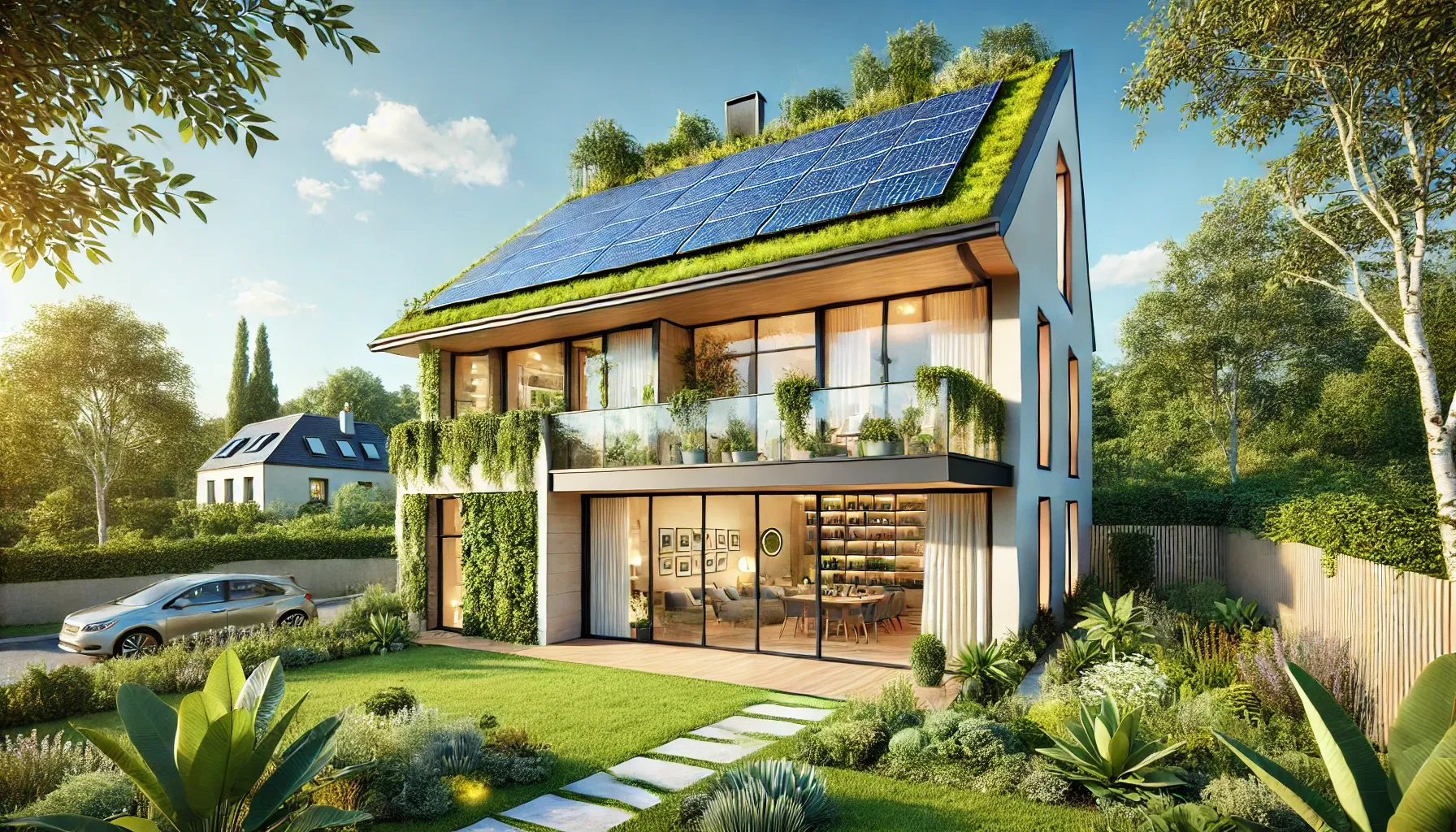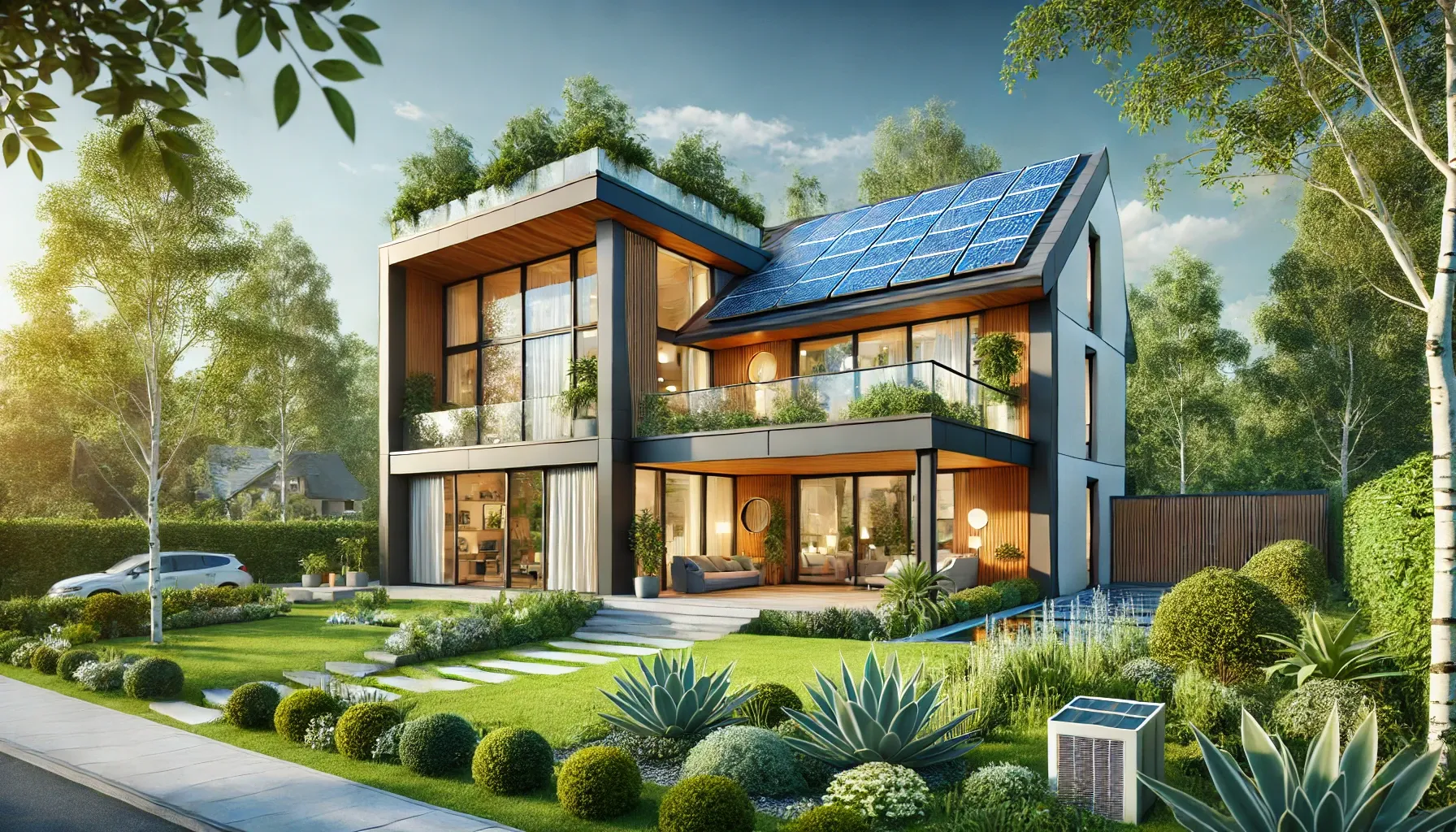Standards for energy-efficient homes in Europe: Effinergie, Minergie, Passivhaus

- Energy efficiency standards in Europe: Effinergie, Minergie, and Passivhaus
- Energy efficient homes: innovative solutions
- Progressive and eco-friendly construction in Zurich
- Passive buildings: concept and features
Energy-efficient buildings in Europe: three popular standards
There are many standards for energy efficient buildings in Europe, but three are the most are the most popular: Effinergie, Minergie and Passivhaus. Such houses cost 5-15% more than standard construction, but they are still in high demand because of the energy savings.
Effinergie
Effinergie was established in France in 2006 and includes three main labels: BBC-Effinergie, Effinergie Rénovation, and Effinergie+. It sets energy consumption requirements that vary depending on the geographical zone of France.
A house in the city of Vence in southern France utilizes energy with a consumption limit of 37.6 kWh/m² per year, thanks to airtight window installations and roof insulation with mineral wool.
By 2020, it is planned to reduce the energy consumption standard in new buildings to 0 kWh/m² per year, in accordance with the new Bepos standard.
Minergie
Minergie is a Swiss energy efficiency standard that was introduced in 1998. Homes built to this standard have excellent insulation and airtightness, which helps reduce energy consumption for heating and cooling. Minergie also encourages the use of renewable energy sources, such as solar energy and geothermal systems.
Passivhaus
Passivhaus is a German standard that is one of the most stringent and well-known in the world. Homes built to this standard have excellent insulation and airtightness, which minimizes the need for heating and cooling.
The key principle of Passivhaus is the passive gain from sunlight, internal heat from people and appliances, as well as heat recovery from exhaust ventilation.
Energy efficient construction in France
In France, in addition to constructing new energy-efficient buildings, old ones are often renovated according to the Effinergie Rénovation standard, which allows for improved energy efficiency.
An example of an energy-efficient house in France is a home in the Vendée department that meets the new Bepos standard. It was built from concrete with insulated walls and roof, equipped with photovoltaic panels on the roof and a gas boiler for heating and hot water, as well as a dual-flow ventilation system. This house can be called an active building, as it not only does not consume energy but also produces it.
It is important to note that the northern facade of the house has better insulation than the southern facade, which allows for more light to enter.
Advantages of energy-efficient buildings
Energy efficient buildings are becoming increasingly popular in Europe due to their numerous benefits. Not only do they save on energy costs, but they also provide a comfortable and healthy indoor climate. a comfortable and healthy indoor climate. In addition, they help to reduce carbon emissions and protect the environment.
Many European countries encourage the construction of energy-efficient buildings through subsidies, benefits, and other incentives, making them increasingly accessible and attractive to consumers.
Energy-efficient homes: innovative solutions for reducing energy consumption
The construction of eco-friendly and energy-efficient homes is becoming increasingly popular. Owners of such homes not only save on utility bills but also enjoy tax benefits and access to favorable loan conditions. Moreover, eco-friendly buildings reduce the burden on the environment.
Effinergie Standard
One of these standards is Effinergie. Building homes to this standard costs 5-7% more, but these expenses are offset by savings on utility bills. Buildings that meet the Effinergie standard consume 4-5 times less electricity and heat than regular homes.
Materials and technologies
- For insulating homes, Effinergie uses modern insulation materials such as wood fiber, hemp, cork sheets, and cellulose fiber.
- The facades of the houses are clad with wooden panels for better thermal insulation.
- Dormer windows are installed to prevent overheating of rooms in summer.
- Heating is provided by a boiler that runs on wood pellets.
- To use the sun, a solar collector is installed to heat water.
- The dual-flow ventilation system is equipped to provide clean and fresh air.
Minergie standard
Another standard is Minergie. It was created in 1994 and buildings complying with this standard buildings have been built in Switzerland. The main criteria include increased thermal insulation of buildings, energy-efficient dual-flow ventilation and the use of renewable energy sources.
Energy-saving requirements
- The thermal conductivity values should not be lower than the corresponding standard.
- Energy consumption for new buildings is limited.
Benefits of Minergie
- Homes that meet the Minergie standard save up to 60% energy.
- Building such houses is more expensive compared to regular ones, but it's an investment in the future and the environment.
- According to data from 2010, it was recognized as the best house of the year in Switzerland.
- There are more than 15,000 buildings in the country certified to the Minergie standard.

Progressive and environmentally friendly construction in Zurich
One exciting building that stands out for its innovation is a 410 square meter mansion built in 2008 in the canton of Zurich by Renggli. of 410 square meters, built in 2008 in the canton of Zurich by Renggli. Located next to a picturesque lake in a protected area, this house fits perfectly into the surrounding landscape.
One of the key elements of this building is the green roof, which helps retain heat in winter and keep it cool in summer, combined with an insulated facade that is 220 mm thick. A smart ventilation system and heat pump provide a comfortable microclimate indoors year-round.
Energy efficiency and Minergie certification
The owner of this unique house, Daniel Strubin, earned a Minergie certificate, which led to a significant reduction in heating and hot water costs. Another important example of using eco-standards is Daniel Strubin, who transformed his old residence into a modern equivalent by installing solar panels and replacing the windows with more energy-efficient ones.
29 September
9 October 2024
9 October 2024




The Passivhaus standard and its impact
The Passivhaus standard, which originated in the 1990s in Germany, has gained popularity in the green building sector. in the green building sector. The first buildings under this standard were created in Darmstadt, emphasizing its efficiency and relevance in the modern world. its effectiveness and relevance in today's world.
Passive buildings: concept and features
A passive building is a structure that saves up to 15 kWh/m² of energy per year, which is significantly less than that of conventional buildings. It is capable of maintaining a comfortable temperature without the need for additional heating in winter and air conditioning in summer. Passive buildings are constructed from environmentally friendly materials, providing excellent thermal insulation for walls, roofs, windows, and floors. They feature large windows on the southern side to maximize solar heat gain. Thanks to high-quality ventilation, such buildings almost do not lose air. Although the construction cost of these homes is slightly higher, they pay off through energy savings within 7-10 years.
Examples of passive houses around the world
In Hamburg, for example, the energy consumption for passive houses is 15 kWh/m² per year. Among modern buildings in Germany and other countries, there are many passive houses, such as "green needles."
Residential complex in Hamburg
For example, a residential complex of 18 apartments in Hamburg, built in 2003, is powered by solar energy and heat recovery ventilation. solar energy and heat recovery ventilation.
Mansion in Ulm
Another example is a house with an area of 272 square meters in Ulm, built in 2007. This mansion is equipped with rainwater collection tanks, solar panels, a heat pump, and a ventilation system. These buildings are well insulated to retain heat and prevent leaks.
Creating sustainable housing
The company Casa Nova specializes in the construction of passive houses, bringing modern eco-technologies and the use of renewable energy sources to life, creating comfortable and sustainable housing. The development and construction of passive houses is becoming increasingly popular as people are becoming more aware of renewable energy issues and the rational use of resources. Instead of excessive energy consumption and environmental pollution, passive houses offer clean, energy-efficient, and comfortable living spaces.
Conclusion
In conclusion, energy efficient home standards such asEffinergie,MinergieandPassivhausare having a significant have a significant impact on the real estate market in Europe. Although building to these standards is costly, they pay for themselves with significant energy savings. additional costs, they are recouped through significant energy savings. In addition, owners of energy-efficient houses enjoy various benefits and favorable credit conditions, which makes such investments even more attractive. investments even more attractive.
In my opinion, it is worth noting that the development of energy-efficient technologies and standards in construction is not only an economically justified solution but also a responsible step towards sustainable development. The practical application of such standards has already proven its effectiveness and gives hope that in the near future, energy-efficient buildings will become the norm rather than the exception.
Comment
Popular Posts
29 September
386
9 October 2024
1485
9 October 2024
9940
Popular Offers

Subscribe to the newsletter from Hatamatata.com!
Subscribe to the newsletter from Hatamatata.com!
I agree to the processing of personal data and confidentiality rules of Hatamatata










